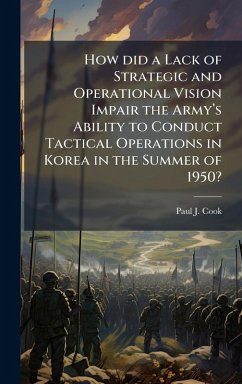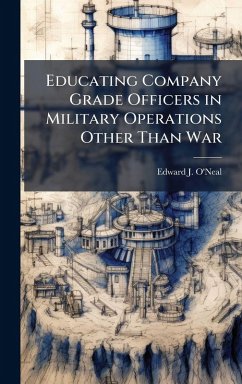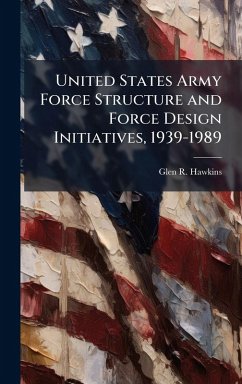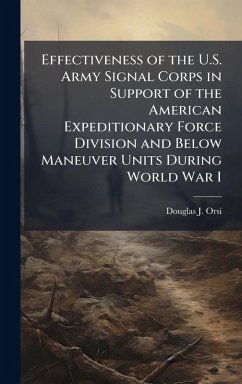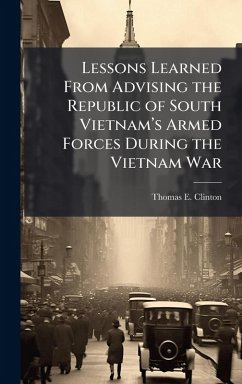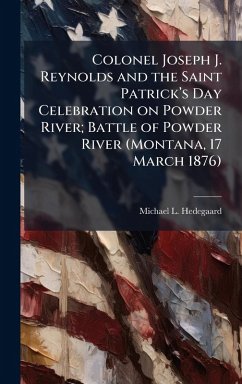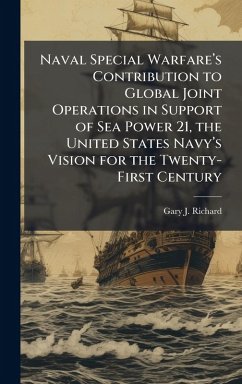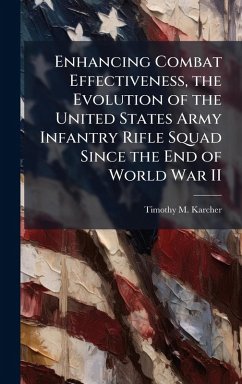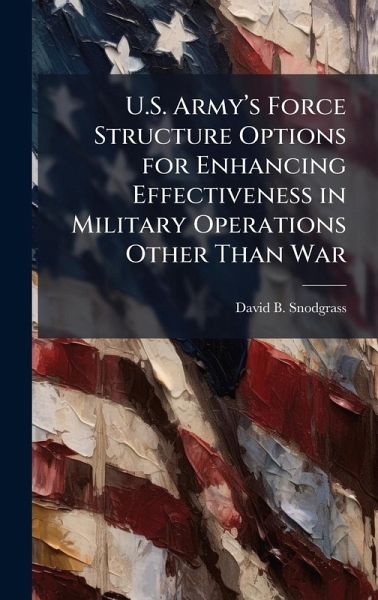
U.S. Armyâ€(TM)s Force Structure Options for Enhancing Effectiveness in Military Operations Other Than War
Versandkostenfrei!
Versandfertig in über 4 Wochen
28,99 €
inkl. MwSt.
Weitere Ausgaben:

PAYBACK Punkte
14 °P sammeln!
This study examines force structure options available to the United States Army to improve performance of its units in military operations other than war (MOOTW) without jeopardizing those units ability to fight and win two near simultaneous major theater wars (MTW). The study begins by establishing the need for increased MOOTW competency based on recent historical trends, realistic assessments of future threats, and existing strategic guidance. Subsequently, the study examines the impact of recent force structure decisions and their potential to enhance MOOTW effectiveness in future operation...
This study examines force structure options available to the United States Army to improve performance of its units in military operations other than war (MOOTW) without jeopardizing those units ability to fight and win two near simultaneous major theater wars (MTW). The study begins by establishing the need for increased MOOTW competency based on recent historical trends, realistic assessments of future threats, and existing strategic guidance. Subsequently, the study examines the impact of recent force structure decisions and their potential to enhance MOOTW effectiveness in future operations. The study analyzes possible options discussed in existing literature to determine if they meet screening criteria to maintain combat readiness, meet strategic guidance, and provide for worst-case scenarios. The study then assesses these options based on their ability to reduce individual units' operational tempo, increase organizational flexibility, and gain political and organizational acceptance. Based on these assessments, the study provides a range of refined options available to Army policy makers that incorporate the best aspects of existing proposals. This work has been selected by scholars as being culturally important, and is part of the knowledge base of civilization as we know it. This work was reproduced from the original artifact, and remains as true to the original work as possible. Therefore, you will see the original copyright references, library stamps (as most of these works have been housed in our most important libraries around the world), and other notations in the work. This work is in the public domain in the United States of America, and possibly other nations. Within the United States, you may freely copy and distribute this work, as no entity (individual or corporate) has a copyright on the body of the work. As a reproduction of a historical artifact, this work may contain missing or blurred pages, poor pictures, errant marks, etc. Scholars believe, and we concur, that this work is important enough to be preserved, reproduced, and made generally available to the public. We appreciate your support of the preservation process, and thank you for being an important part of keeping this knowledge alive and relevant.



